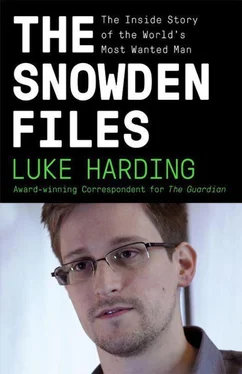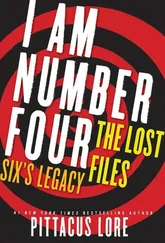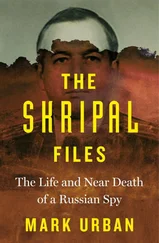Nor would most members of Congress. Initial knowledge was limited to the top Democrat and Republican on the Senate and House intelligence committees. By January, the NSA included Democrat Ken Inouye and Republican Ted Stevens, the leaders of the Senate appropriations committee, which presides over the purse for the Senate. It would take until January 2007 for 60 people on Capitol Hill to be cleared to know the details of STELLAR WIND, out of 535 US legislators.
But from the start, STELLAR WIND appears to have had the enthusiastic support of the major telephone companies and internet service providers. This would prove to be crucial. Unlike in the old Soviet Union or modern-day China, the US government does not own and operate the internet’s fibre-optic cables and switches, even the parts that pass through and out of the US. For the NSA to have a hope of harvesting phone and email records, it needed the co-operation of those companies.
The NSA’s internal history records that unnamed ‘private-sector partners’ began providing the agency with phone and internet content from overseas in October 2001, the first month of the program, and phone and internet metadata from inside the US the following month.
The volume of communications traffic the companies opened up to the NSA was tremendous. Infrastructure controlled by three ‘corporate partners’, as the NSA referred to them, represented an estimated 81 per cent of international calls transiting through the United States. Close and secret partnership with telecoms is nothing new for the NSA: in fact, it is the way the NSA has operated since its inception. Those long-standing relationships, along with the patriotic sentiment of a nation wounded after 9/11, provided for a receptive audience from the firms. Two of the three ‘corporate partners’, for instance, contacted the NSA even before STELLAR WIND officially began and asked, ‘What can we do to help?’
The following two years saw at least three more telecommunications firms approached to provide support to STELLAR WIND – although strains were beginning to emerge. The demand for this additional data did not occur, thanks to a judge’s order. It was a unilateral request from the NSA, with nothing more official than a notice from Attorney General John Ashcroft – who periodically renewed the program – to back it up, and Ashcroft was no judge. One of the three firms provided merely ‘minimal’ support to the agency. Two others were even more hesitant. One, which the NSA wanted to provide it with email content, bucked the agency due to ‘corporate liability concerns’, according to an internal NSA draft history. Another wanted to bring in outside lawyers to review the legality of its compliance. The NSA, deeming the risk of exposure too great, withdrew the request.
There was unease within the Justice Department too, about the program’s legality. The deputy attorney general, James Comey, was reported to have refused to sign off renewals during his boss Ashcroft’s illness. Not only Hayden, the head of the NSA, but also President Bush himself were personally involved in a 2004 attempt to pressurise the New York Times to suppress a leak about the program. ‘The Bush administration actively misled us, claiming there was never a doubt that the wiretapping operations were legal,’ says Eric Lichtblau, one of the authors, along with Risen, of the subsequent exposé of the scandal in the newspaper.
In December 2005, the NSA’s worst fear eventually came true. ‘BUSH LETS US SPY ON CALLERS WITHOUT COURTS’ read the front-page headline in the New York Times . The story gave only a fraction of the picture. It focused on the warrantless NSA interception of Americans’ international phone calls and email traffic, without disclosing the bulk collection of the metadata that essentially provided the agency with a social network of everyone inside the US and their ties abroad.
While denouncing the Times , Bush publicly launched a vigorous defence of the program as one of the biggest post-9/11 intelligence successes. Even shrewder, Bush confirmed only the parts of STELLAR WIND that the Times had reported, and gave them a new, politically powerful name that would put its critics on the defensive: the Terrorist Surveillance Program.
As with nearly every element of Bush’s national security policies, the subsequent furore was largely partisan and predictable: Republicans fell over themselves to defend the warrantless surveillance as necessary to thwart terrorists; Democrats just as quickly denounced it as a constitutional atrocity.
In October 2001, Nancy Pelosi, the liberal Californian House minority leader and parliamentary tactician, had been the ranking Democrat on the House intelligence committee, and she attended Hayden’s initial briefings. Bush administration officials and allies, smelling hypocrisy and opportunism, accused Pelosi of abandoning a program she had safeguarded in secret.
Pelosi fought back. She declassified a letter she wrote to Hayden days after STELLAR WIND became operational, which expressed uneasiness: ‘Until I understand better the legal analysis regarding the sufficiency of the authority which underlies your decision on the appropriate way to proceed on this matter, I will continue to be concerned.’
Pelosi was not the only one personally affected by the revelations. Vito Potenza had a problem on his hands the moment the Times ran with the story. As the general counsel for the NSA, one of Potenza’s responsibilities was interacting with the telecoms and internet service providers, to reassure them that their co-operation was legal. But that was an easier arrangement to maintain in secret. Now that the media had run with the story, the telecoms worried about both their bottom lines and their legal exposure. But they also didn’t contemplate ending the arrangement with the NSA.
One of the service providers passed on a potential solution to Potenza. Don’t ask us to provide telephone metadata. Make us do it. ‘The provider preferred to be compelled to do so by a court order,’ the NSA’s internal history noted.
So during the early months of 2006, the Justice Department and NSA lawyers worked together to craft a secret legal authorisation for domestic telephone metadata collection that would withstand the scrutiny of the equally secret FISA court, now briefed on STELLAR WIND. The answer was the so-called ‘business records provision’ of the Patriot Act, its now-notorious section 215.
Under section 215, passed after 9/11 and already detested by civil libertarians, the government had the power to compel businesses to turn over items ‘relevant’ to an ‘ongoing’ terrorism investigation. Shoehorning bulk metadata collection into that statutory requirement was tricky. It was questionable whether all Americans’ phone records posed any relevance to any actual ongoing investigation. The metadata was more like a body of information that occurred prior to an investigation, creating the conditions for divining investigative threads.
Yet the newly briefed FISA court proved to be receptive. ‘There are reasonable grounds to believe that the tangible things sought are relevant to authorised threat investigations… being conducted by the FBI,’ wrote Judge Michael Howard of the FISA court on 24 May 2006, in a classified decision, granting the court orders the companies wanted.
Keith Alexander, the next director of the NSA, was to describe these relationships with telecoms and internet service providers during a contentious hearing of the House intelligence committee on 29 October 2013: ‘We’ve asked industry’s help. Asked? OK, more accurately, we have compelled industry to help us in this manner by court order.’
It would have been more accurate, perhaps, to say ‘industry’ compelled Alexander to compel industry by court order.
Читать дальше












